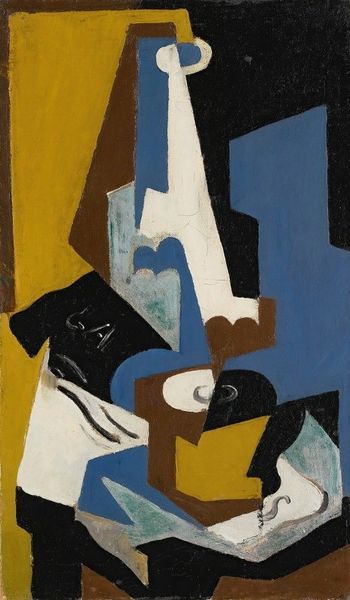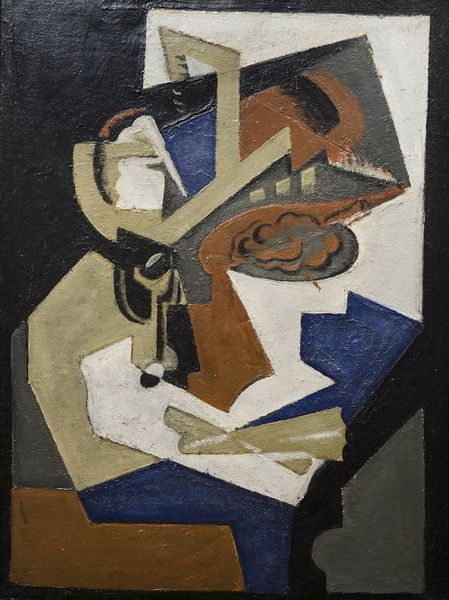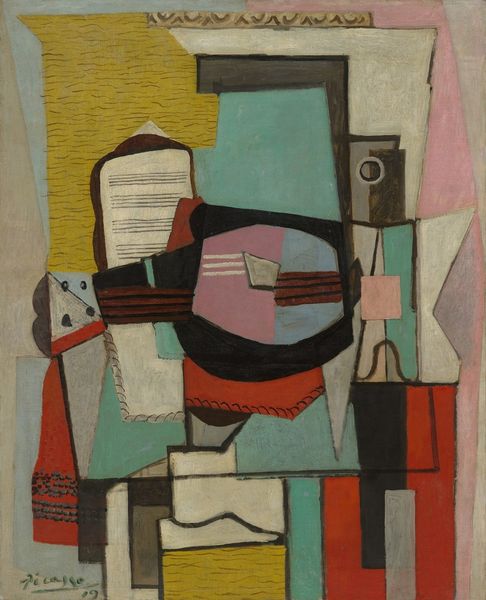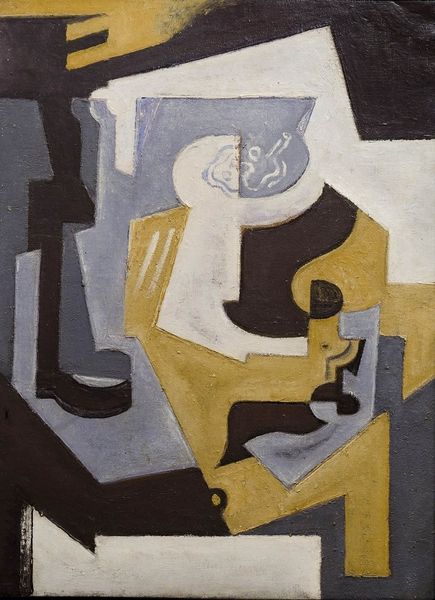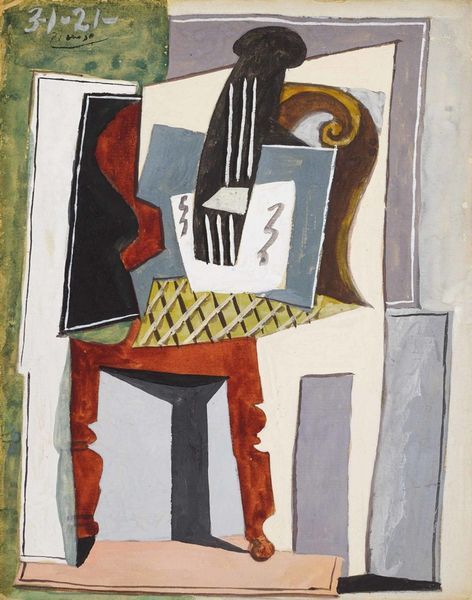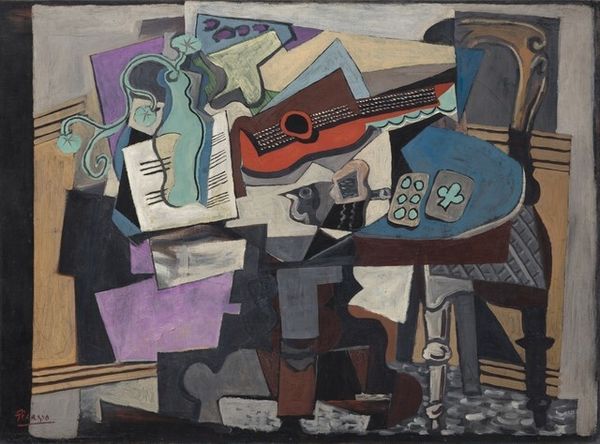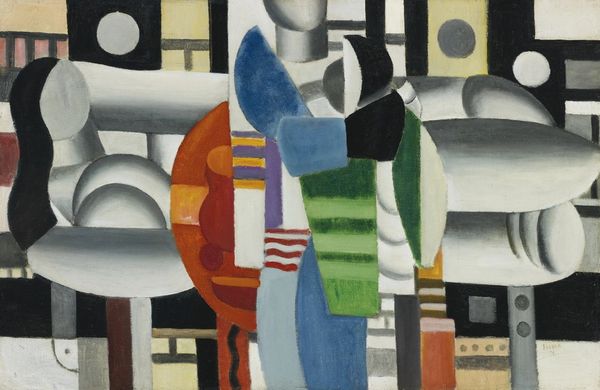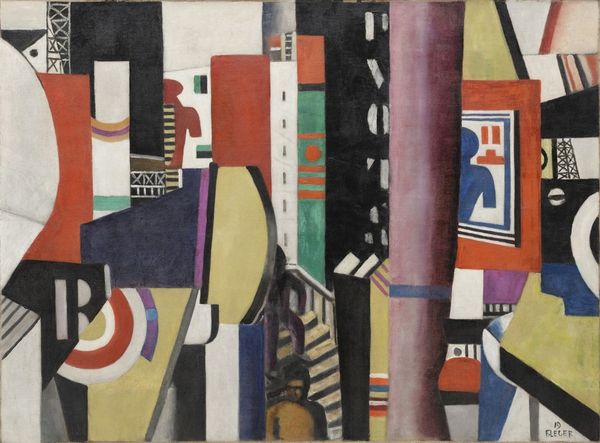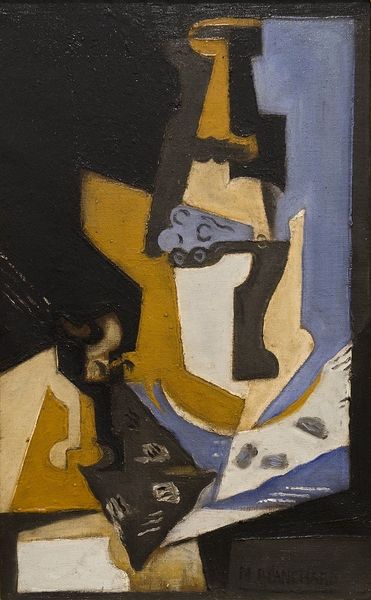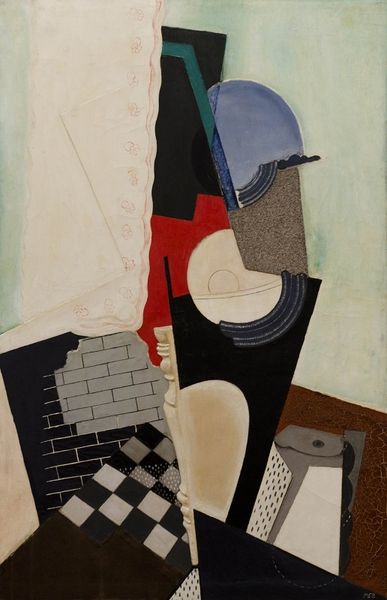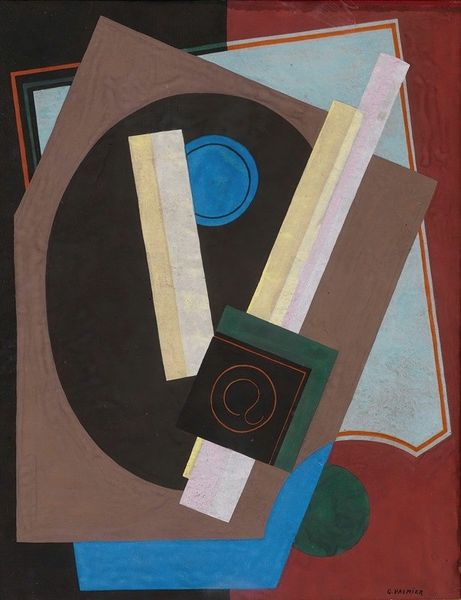
canvas
#
abstract painting
#
painted
#
possibly oil pastel
#
oil painting
#
canvas
#
acrylic on canvas
#
underpainting
#
paint stroke
#
painterly
#
painting painterly
#
watercolor
Dimensions: 81 cm (height) x 54 cm (width) (Netto)
Editor: So, this is "Cubist Still Life," dating somewhere between 1820 and 1920, by Louis Marcoussis. It seems to be oil on canvas, and the subdued blues and browns create a rather melancholic mood, almost like a quiet melody. What strikes you most when you look at this piece? Curator: I see a conversation—or perhaps a struggle—between tradition and modernity. The still life, a classical subject, is radically disrupted by Cubism's fragmented perspective. What does it mean to represent the familiar in a way that is inherently destabilizing? Consider the period it was created in – early 20th century. A time of incredible upheaval: social, political, technological… everything was being questioned. Doesn't the deconstruction of form here mirror a larger societal deconstruction? Editor: That’s a compelling idea! So the fractured composition isn’t just about representing multiple viewpoints, but also reflecting broader cultural anxieties? Curator: Exactly! And think about the implied audience. Who had access to art like this at the time? Was Cubism a way for certain artists to distance themselves from older value systems and conservative social strata, setting the stage for a new cultural paradigm? Notice how the painting also includes a score fragment. Music often appears in Cubist painting, why do you think that is? Editor: I hadn't considered that at all! Maybe because music itself was changing? Becoming less structured? So maybe it is the "soundtrack" to social and artistic upheaval, mirroring art trends and changes in society. Thank you, it has provided with great information for future reflections and research. Curator: Absolutely. The beauty of art history is in these layers of interpretation. Always ask who benefits, and whose stories might be missing.
Comments
No comments
Be the first to comment and join the conversation on the ultimate creative platform.
